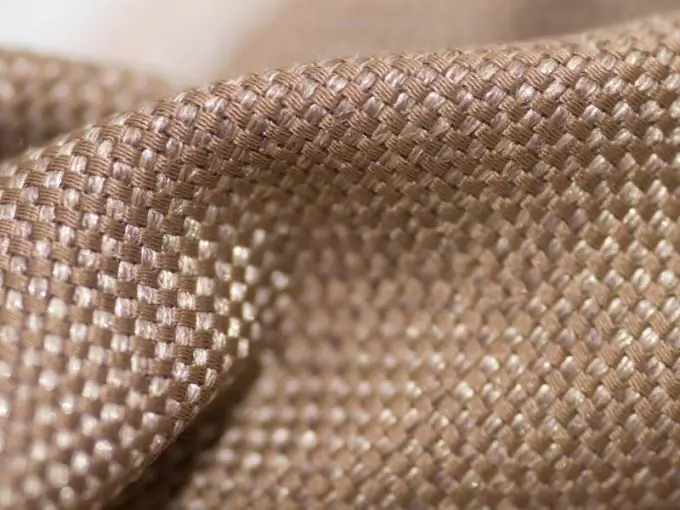Linen is an environmentally friendly material that is used not only for making clothes, but also as technical raw materials (fuel, oil, ropes, etc.). In addition, flax has excellent healing properties, it helps relieve inflammation, regulates air exchange, and therefore has long been used in the field of medicine.

Instructions
Step 1
The raw materials for the production of linen fabric are fibers that are extracted from the stems of the plant. In order to obtain flax fiber, collect flax and perform its primary processing. Soak the straw (private enterprises use their own recipes for the composition to hydrolyze flax, this technology is often a trade secret)
Step 2
Dry the straw - the stems should be completely dry. Now proceed to creasing and beating the material. The final pre-treatment step is carding the fibers to obtain a clean fiber. As a rule, linen is not dyed, but sometimes it is whitewashed. Purchase a composition and divide your raw materials into the required categories: tough, medium, and wrinkled. Depending on the category of raw materials, dilute the solution and bleach the flax.
Step 3
Next, there is a process called weaving, this is the transformation of fibers directly into fabric. The whole process can be divided into three stages: spinning, weaving, finishing.
Step 4
The fabric is an interweaving of warp and weft threads (warp threads are threads running along the fabric, weft threads are threads located across the fabric). At the edges of the fabric, the threads are placed more often, and the weave comes out denser, it is called an edge, it prevents the fabric from shedding and stretching.
Step 5
The simplest type of weaving of threads is plain, where each warp thread is intertwined with a weft thread through one. This type of weave is considered very durable and is characterized by a smooth, matte surface, the same pattern on both sides.
Step 6
The fabric, after being removed from the loom, has a yellowish color and also a rough surface, so it must be finished. It is necessary to remove residual fibers from its surface, bleach and paint it, you can also apply a pattern. The purpose of finishing is to give the fabric a presentation and improve its properties. Also note that the fabric has two sides: front and back. The first one is smooth and shiny, has a bright color (drawing), there are fewer villi on its surface. The reverse side, on the other hand, is dull and slightly rough, its color and pattern is pale, there are more villi and nodules on the surface.






